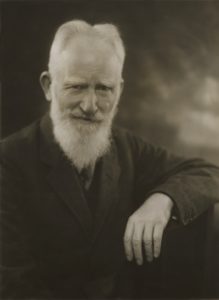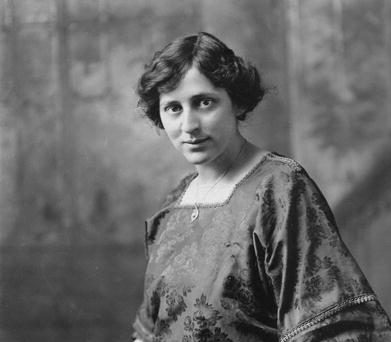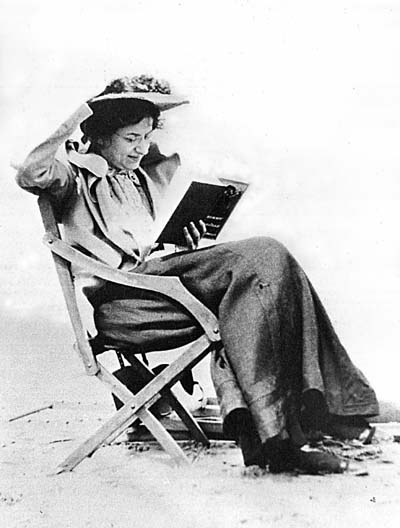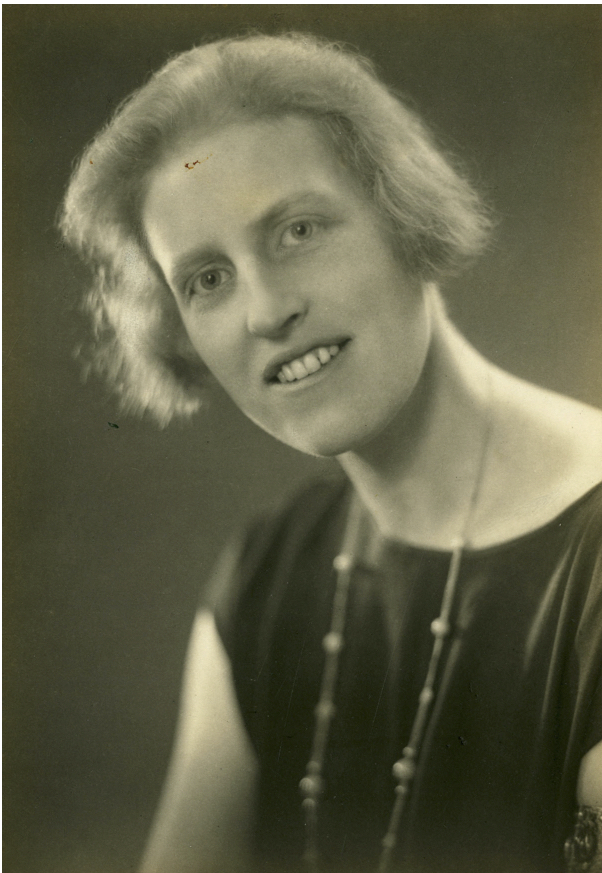
Hailed as “Saint Bernard” by Time and Tide’s founder and editor Lady Rhondda, George Bernard Shaw did much to raise the magazine’s profile. A celebrated dramatist and reviewer, winner of a Nobel Prize and an Academy Award, Shaw was one of Time and Tide’s most well-known contributors. Co-founder of the New Statesman in 1913, with fellow Fabian socialists Beatrice and Sidney Webb, he played a key role in expanding Time and Tide’s readership beyond its initially female target audience.
Shaw was born in 1856 in Dublin, to Lucinda Elizabeth, a music teacher, and George Carr Shaw, a clerk and failed corn merchant. His parents’ marriage was unhappy, and just before he turned sixteen, his mother left his father and moved with his sisters to London, to live with ‘Vandeleur’ Lee, a singing teacher and impresario. George remained with his father in Dublin, where he began work as a clerk at an estate office. He excelled at his job, but hated its tedium and disliked collecting rent from less well-off tenants, a task that fuelled his socialist consciousness.
Shaw cultivated an interest in the Arts from boyhood, attending Dublin’s National Gallery after school, reading in the evenings, and teaching himself to play the piano. In 1876, he moved to London where, supported initially by his mother and sister Lucy, he began to write novels, most of which were rejected by publishers. He was far more successful as a reviewer however, of art, plays, books, and music, and achieved an international following as theatre critic for the Saturday Review. He discovered socialism, joining the Fabian Society in 1884, and helping to found the Independent Labour Party in 1893; his belief that art could be used to promote social progress inspired him to write plays, and he started work on these in earnest during the early 1890s. Throughout his life he wrote over sixty plays, including Man and Superman(1902) and Saint Joan (1923). Pygmalion (1912) was adapted for film in 1938, Shaw winning an Academy Award for the screenplay. He was awarded the Nobel Prize for Literature in 1925, and was working on a play when he died, in 1950, aged 94.
Shaw began contributing to Time and Tide in October 1920, and his cultural stature made him one of the magazine’s most prized assets when its directors decided to alter their publication’s “slant” by rebranding it as a leading intellectual weekly review, competitive with the New Statesman. In a bumper issue published on 22 February 1929 Time and Tide showcased this change in direction with a sketch by Shaw; spending over £1000 on advertising and ordering four times the usual number of copies, the magazine’s directors promoted this issue hard, and it sold out within one hour, founder and editor Lady Rhondda commenting later that Shaw’s name had a “wonderful effect” on sales. This was neither the first nor the last time that Time and Tide capitalised on Shaw’s celebrity. Two years previously, he had chaired a debate about women and leisure between Lady Rhondda and the author and critic G. K. Chesterton at the Kingsway Hall in London, which, broadcast on the radio and covered by provincial newspapers, had been a publicity triumph for the magazine. On 1 November 1929, Shaw presided over a house-warming luncheon at Time and Tide’s new offices in Bloomsbury, which the magazine devoted an illustrated feature article; the luncheon also received coverage in the Manchester Guardian.
Shaw remained a strong advocate of Time and Tide beyond the interwar years, praising its female directors and contributors, in a 1940 article, for the courage, decisiveness, and conviction they showed in their coverage of the Second World War. He continued writing for the magazine into the 1940s, two 1945 articles, most notably, outlining his outspoken and divisive views on democracy. Shaw did not always see eye-to-eye with Lady Rhondda, but they remained friends and correspondents until his death. He was the subject of one of Rhondda’s final ‘Notes on the Way’ articles in Time and Tide, published in the summer of 1956.
By Dr Eleanor Reed.
With thanks to Professor Angela V. John, for sharing notes she made on Shaw’s contribution to Time and Tide during her own archival research into the magazine.
Sources:
Clay, Catherine. Time and Tide: The Feminist and Cultural Politics of a Modern Magazine. Edinburgh: Edinburgh University Press, Ltd, 2019 (2018)
John, Angela V. Turning the Tide: The Life of Lady Rhondda. Cardigan: Parthian, 2013
https://www.nobelprize.org/prizes/literature/1925/shaw/biographical/
https://www.biography.com/writer/george-bernard-shaw
http://www.english.upenn.edu/~cmazer/mis1.html
https://www.theguardian.com/stage/2011/jan/23/germaine-greer-george-bernard-shaw


